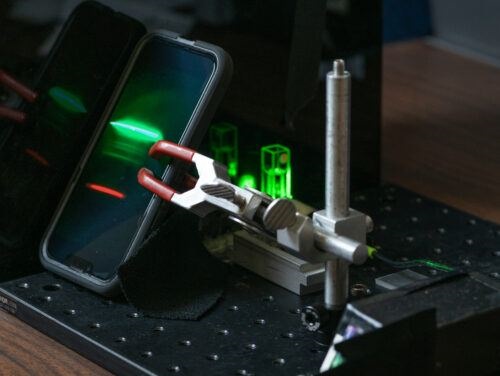Pocket-Sized Invention Revolutionizes Ability to Swiftly Detect Pathogens in Hospital Setting
Posted on 17 Jul 2024
Traditionally, the detection of pathogens in a hospital environment could take several days. Now, a new technology combining a cellphone camera with a Raman spectrometer—a sophisticated laser-based chemical analysis tool—enables the rapid detection of drugs, chemicals, and biological molecules that are invisible to the naked eye.
Engineers at Texas A&M University Engineering (College Station, TX, USA) have developed a handheld cellphone-based Raman spectrometer system. This device allows for the non-invasive identification of potentially hazardous chemicals or materials directly in the field, particularly beneficial in remote locations where traditional, larger laboratory spectrometers are impractical due to their size and power requirements. This innovative Raman spectrometer system incorporates lenses, a diode laser, and a diffraction grating—a compact, square-shaped surface that disperses light for analysis—along with a standard cellphone camera to capture the Raman spectrum. The resulting spectrum’s peaks provide detailed information about the chemical makeup and molecular structure of a substance based on the intensity and location of these peaks.

To operate the device, a cellphone is positioned behind the transmission grating with the camera aligned to capture the Raman spectrum. A laser directs a beam at a sample, such as a bacterium placed on a slide. The cellphone camera records the resulting spectrum. When combined with a dedicated cellphone app/database, this portable device facilitates immediate on-site identification of materials. Previously, such identification required collecting extensive biological samples for laboratory analysis, which could take many hours or days. Unlike traditional Raman spectrometers, which can cost thousands of dollars, this new device is significantly more affordable and can identify materials much more quickly.
“It’s a small device that can tell you the composition of a particular system, material or sample,” said Dr. Peter Rentzepis, a professor in the Department of Electrical and Computer Engineering at Texas A&M University, who holds a patent for the hand-held cellphone-based Raman spectrometer system. “You can even have it in your pocket.”
Related Links:
Texas A&M University Engineering













